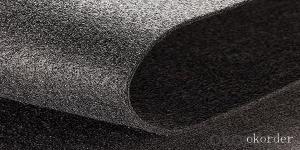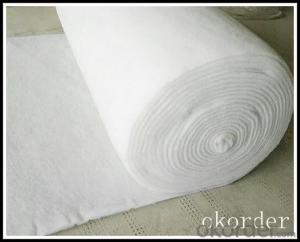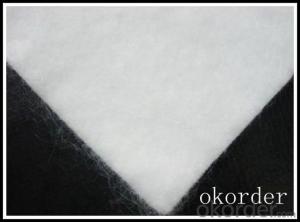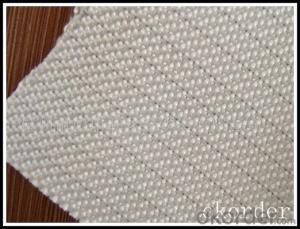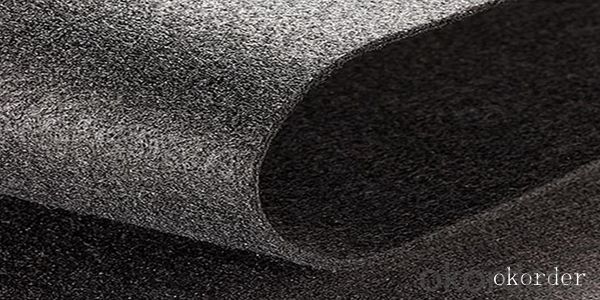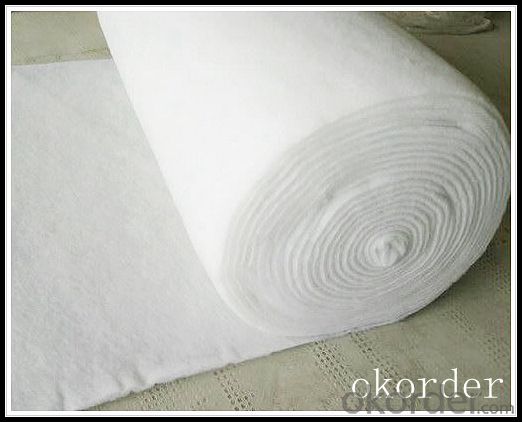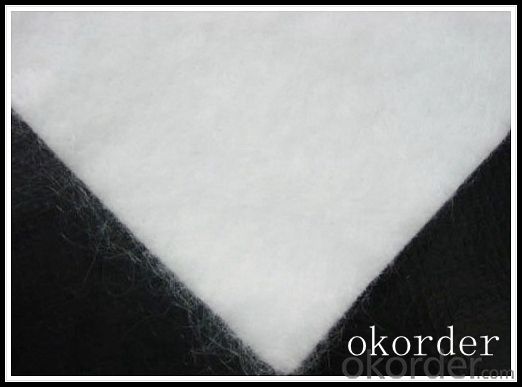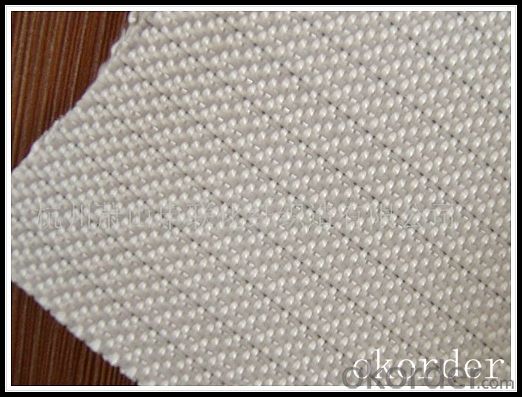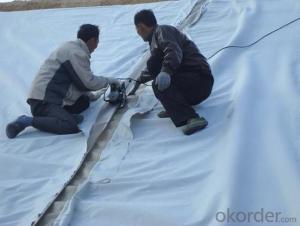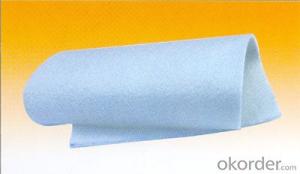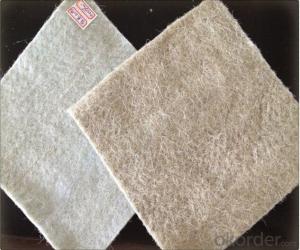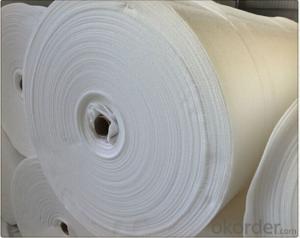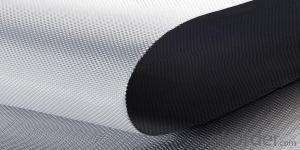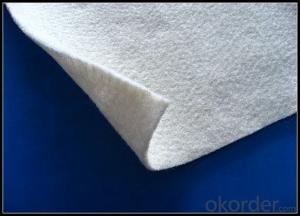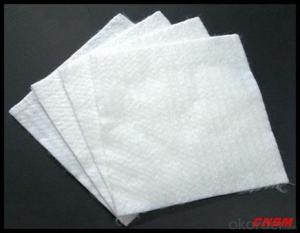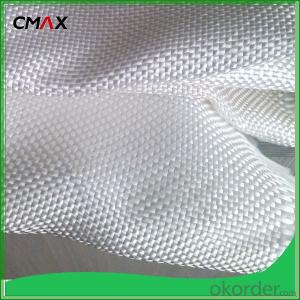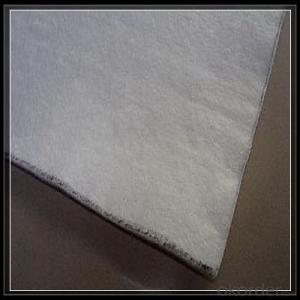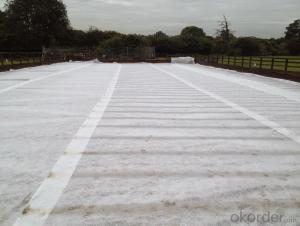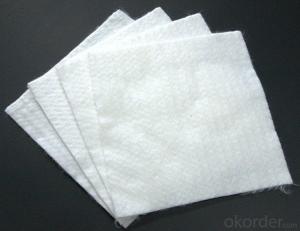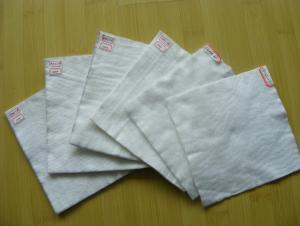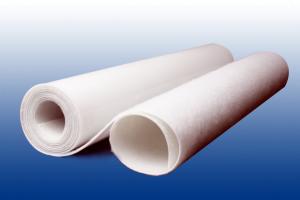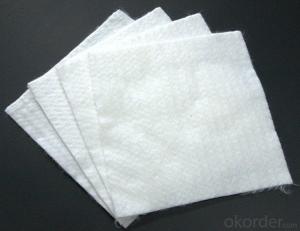Geotextile for Slope Protection - Spunbond Civil Non-Woven Geotextiles Industrial Nonwoven Fabric
- Loading Port:
- China main port
- Payment Terms:
- TT OR LC
- Min Order Qty:
- 1000 m²
- Supply Capability:
- 1000000 m²/month
OKorder Service Pledge
OKorder Financial Service
You Might Also Like
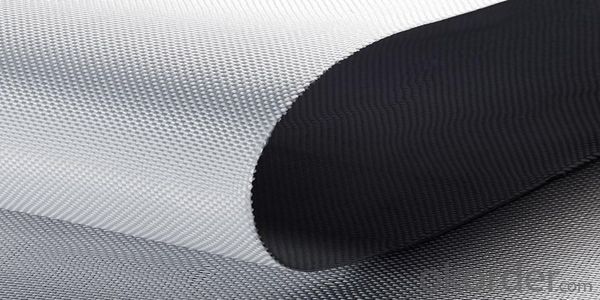
Product Introduction
Nonwoven geotextiles consist of fibers that are continuous filament or short staple fibers. These fibers are then Nonwoven geotextiles Image bonded together by various processes that can include a needling process that intertwines the fibers physically (needlepunched), or a chemical / thermal bonding operation that fuses adjacent fibers together. The resulting nonwoven geotextiles have a random fiber orientation with high porosity and permeability, but indirect and unpredictable openings, a thickness ranging from thick felt to a relatively thin fabric, and low modulus and high elongation (needlepunched).
1. Geotextile Specifications
1) Weight / Mass: 100g/m2-1500g/m2
2) Width: Within 8 m (1m-8m)
3) Length: 50m-100m/roll (as request)
4) Material: PP / PET
5) Color: Black , white , grey and other color
6) Certificate: CE/ISO9001 , ISO14001
7) Manufacturing method: nonwoven / woven
Features and Benefits
Nonwoven structure, providing excellent surface friction and built-in elongation
Effective filter, with tight pore size (AOS=70) and high permittivity
High tensile strength, with excellent puncture and tear resistance
Range from 3.2 oz/sy (109g/sm) – 16.0 oz/sy (543g/sm)
Thick structure, allowing cushioning and lateral gas and liquid transmission
Our Service
Quality assurance
1.On a regular basis or as per your request,we entrust national testing agencies to conduct quality inspections
2. Strictly in accordance with the ISO9001-2008 international quality system standard,we monitor and manage the whole process throughout production,quality testing,and measurement to ensure product quality
3. For quality-related construction delay or substandard construction(except for damage or losses due to customer’s responsibility or irresistible natural disasters),we have refunding,replacement,and repair services.We will respond to customers’ feedbacks on quality issues within 24 hours.
Packaging & Shipping
Packing: PLASTIC FILM INSIDE, AND WOVEN BAG OUTSIDE
Shipping: About 15 days after receipt the deposit
FAQ:
Q: What kind of payments does jenor support?
A: T/T, L/C, Cash are accepted.
Q: Do you charge for the samples?
A: Accordeing to our company policy, the samples are free, we only charge the freight fee. And we will return the freight fee during the next order.
Q: Can you produce according to customers' design?
A: Sure, we are professional manufacturer, OEM and ODM are both welcome.
Q: Do you have other products?
A: Yes, please check the pictures:
- Q: Can geotextiles be used in bridge construction?
- Yes, geotextiles can be used in bridge construction. Geotextiles provide additional support, reinforcement, and stabilization to bridge structures. They help in preventing soil erosion, managing water drainage, and improving the overall stability and durability of the bridge.
- Q: What is the purpose of using geotextiles?
- The purpose of using geotextiles is to provide reinforcement, separation, filtration, and drainage in various civil engineering and construction applications. Geotextiles help improve soil stability, prevent erosion, control sediment migration, and enhance the overall performance and longevity of infrastructure projects.
- Q: Are geotextiles resistant to abrasion?
- Yes, geotextiles are generally resistant to abrasion. They are designed and manufactured to withstand the wear and tear caused by friction and rubbing, making them durable and suitable for various applications such as erosion control, filtration, and reinforcement in civil engineering projects.
- Q: What are the factors to consider when selecting geotextiles for landfill applications?
- When selecting geotextiles for landfill applications, there are several factors to consider. These include the type and strength of the geotextile, its permeability and filtration properties, its resistance to chemical and biological degradation, its durability and longevity, as well as its cost-effectiveness. It is important to choose a geotextile that can effectively separate different materials in the landfill, provide adequate drainage and filtration, withstand the harsh environmental conditions, and ultimately contribute to the overall stability and performance of the landfill system.
- Q: Seepage geotextile symbol
- I produce geotextile materials
- Q: What are the uses of acupuncture geotextiles?
- Hello! You said there are two, the first is staple acupuncture non-woven geotextile, it is widely used in railways, highways, sports grounds, dam dams, water and soil construction, tunnels, coastal beaches, reclamation, environmental protection projects! The second is filament spunbonded acupuncture non-woven geotextile, which is widely used in the bottom of the landfill site, slope, closure of the reinforcement and protection, water conservancy project dam dam and slope of the filter, channel Isolation, seepage, road, rail, airport runway foundation isolation, filter ~ drainage! Soil slope, retaining wall and road reinforcement ~ drainage, port engineering soft foundation treatment, beach reclamation, port terminals and anti-slope reinforcement ~ drainage! I hope to help you, specializing in the production of geotechnical materials to answer!
- Q: What is the difference between polypropylene geotextile, polypropylene geotextile and polyester geotextile
- The raw material is not the same as the clothes have the same cotton polyester tea is the same characteristics of the characteristics of acid-resistant polyester anti-purple better look at where to see where the 4935 penguins
- Q: River design design depth of 1 meter, 100 meters wide surface, requiring geotextile cloth two films. How many grams are appropriate? Bao Bao package material per square meter open to move to cut the amount of taxation Bao Bao Bao how much money first thank you master, urgent use. More
- Collar - Xiang, composite geomembrane, geotextile, a variety of specifications
- Q: Can geotextiles be used for filtration purposes?
- Yes, geotextiles can be used for filtration purposes. They are specifically designed to allow water to pass through while retaining soil and other particles, making them effective for various filtration applications such as preventing erosion, drainage systems, and sediment control.
- Q: What are the benefits of using geotextiles in road construction?
- Using geotextiles in road construction offers several benefits. Firstly, geotextiles act as a reinforcement material, enhancing the strength and stability of the road. They help distribute the load from the traffic, reducing rutting and improving the overall durability of the road. Secondly, geotextiles prevent the mixing of different layers of the road, such as the subgrade and base, by acting as a separator. This prevents the contamination and weakening of the road structure. Additionally, geotextiles provide effective drainage, allowing water to pass through while preventing the clogging of soil particles. This helps in maintaining the road's stability and preventing water damage. Moreover, geotextiles can be cost-effective by reducing the need for expensive materials like aggregate, as they can be used to reinforce weak soils. Overall, the use of geotextiles in road construction can result in longer-lasting roads with reduced maintenance needs.
Send your message to us
Geotextile for Slope Protection - Spunbond Civil Non-Woven Geotextiles Industrial Nonwoven Fabric
- Loading Port:
- China main port
- Payment Terms:
- TT OR LC
- Min Order Qty:
- 1000 m²
- Supply Capability:
- 1000000 m²/month
OKorder Service Pledge
OKorder Financial Service
Similar products
Hot products
Hot Searches
Related keywords
